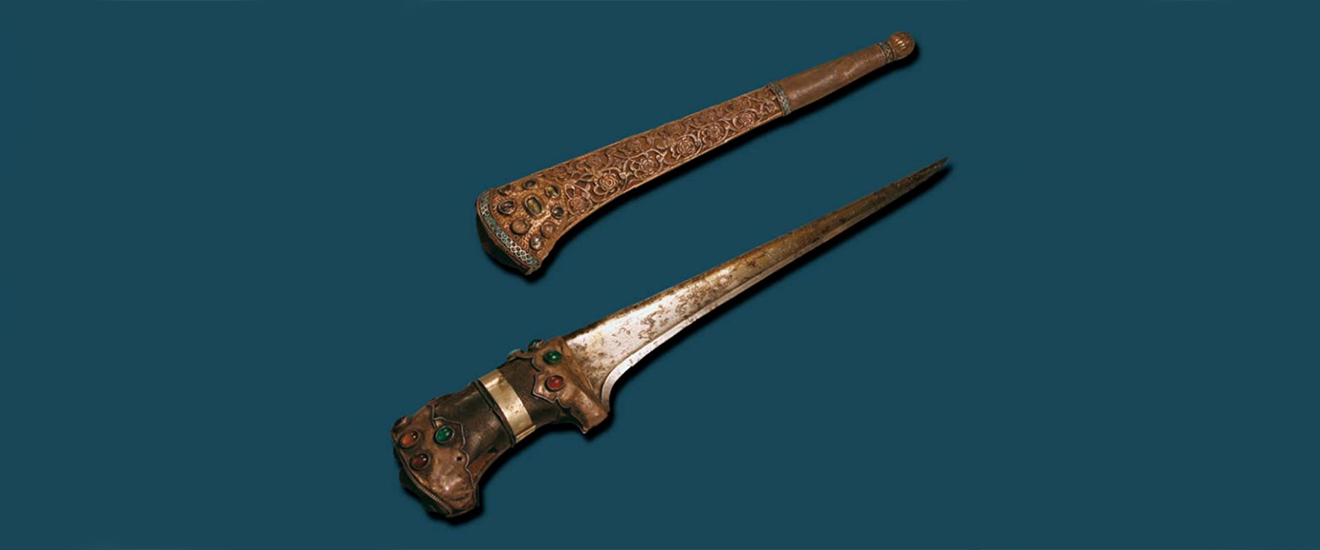By the end of the 15th century AD, Timurid power in Central Asia had split into a number of independent and semi-independent principalities. In the early 16th century AD the Uzbek Shaybani Khan seized Samarkand, Bukhara, Tashkent and Andijon leading to the Shaybani dynasty’s control from Bukhara of much of the territory of Uzbekistan under Khans such as Ubaydullah (r. 1533-1539 AD) and Abdullahkhan (r. 1593-1598). At the end of the 16th century AD power passed to the Janid (Astarkhanid) Khans and subsequently, following the invasion of much of the region by the Persian Nadir Shah in 1740 AD, to the Manghits who ruled the Emirate of Bukhara until its abolition by the Soviets in 1920. From the late 15th- late 19th centuries Khorezm in the west constituted an independent khanate with an often volatile political history which stabilised under the rule of Muhammad Rakhim Khan (1805-1825) only to fall to Russian forces in 1873. In the east the Khanate of Kokand became the dominant power by the late 18th century, Alim Beg officially taking the title of Khan in 1805. Russia conquered the Khanate in 1876.

Science and Culture
Although part of the history of these four centuries was tumultuous, during periods of effective governance and prosperity there were many noteworthy developments in all three khanates in culture, science, public building, agriculture and commerce. The role of the Uzbek language grew significantly during this period, being widely used both in literature and in state affairs. Presented are images of famous poets – Babarahim Mashrab (1640-1711 AD), Majlisi (17th century AD), Ogahi (pen name of Muhammad Erniyezbek ogli – 1809-1874), Munis (pen name of Shermehammad Avazbii – 1778- 829 AD), Uvaisi (1780-1841 AD), Nodira (1792-1842 AD), Gulkhani (17th century AD), Nishoni (17th century AD) and Bedil (1649-1721 AD), together with examples of their works and teaching aids, evidence of the significance which the people of the time placed on education. Also shown are historical and scientific works of the period, miniatures and photographs. In the second half of the 19th century the Khivan ruler Muhammad Rakhim Bahadur Khan II (Feruz) created the first guide for playing music in the Uzbek makhom modes on the tanbur (a four-stringed lute). Feruz was also one of the greatest Uzbek poets.
Trade Links
Internal and external trade played a vigorous and fundamental role in the life of the khanates. Diplomatic links were strengthened with India, Turkey, Russia, China and other neighbouring countries. Large quantities of textiles, paper, metal wares and weapons were exported. A map shows the 19th century trade routes which passed through the region together with examples of imported English, Japanese and Chinese textiles, imported copper ware, etc.
CRAFTS
Cities such as Bukhara, Samarkand, Kokand and Tashkent were centres of various crafts, which achieved a high level of development, as attested in this section of the exhibition by examples of local weaving, female and male attire (from Tashkent, Bukhara, Ferghana and Khiva - particularly notable being Bukharan gold khalat (ceremonial cloaks), shoes and belts), various items of female jewelry (head ornaments, breast ornaments, pieces, forehead ornaments, rings and earrings) and wonderful examples of copper vessels and ceramic wares.